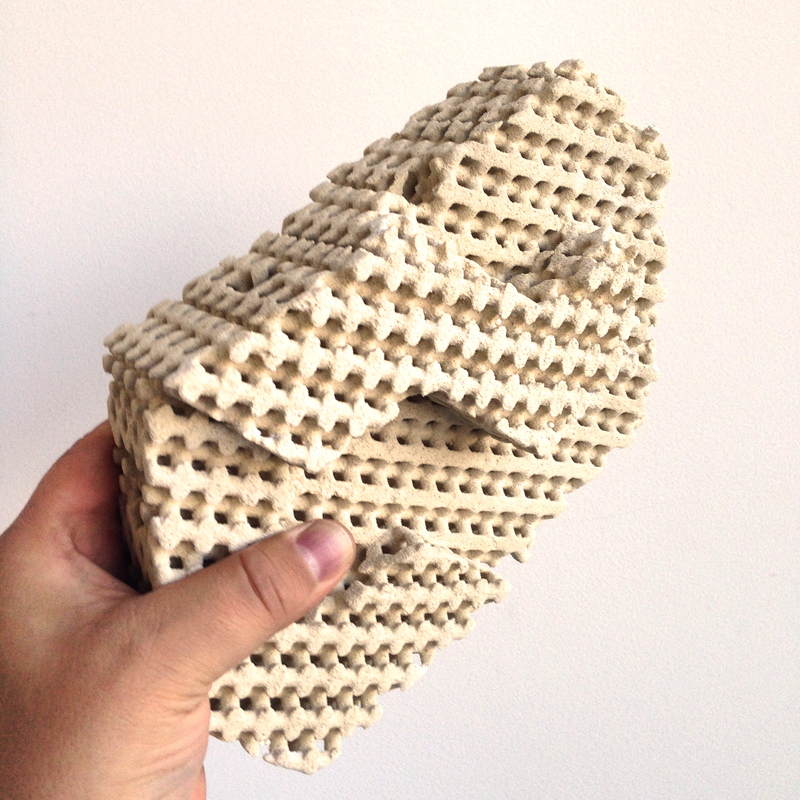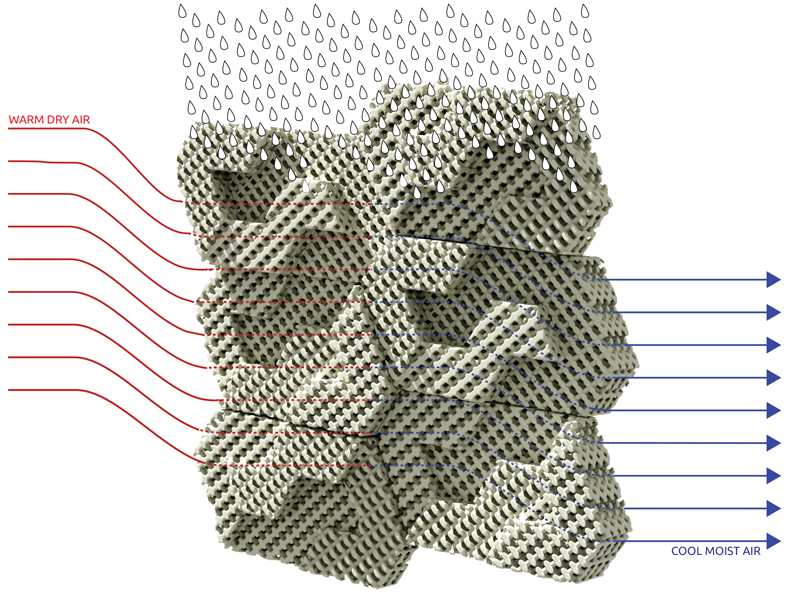
This 3D printed cool brick” could offer an inexpensive and environmentally friendly alternative to air conditioning. Courtesy of Emerging Objects.
February 3, 2015
Additive manufacturing (AM) could well end up being one of the greenest technologies. Not only can it reduce carbon emissions by shortening supply chains, it is also a key part of many new ideas for environmentally friendly systems. 3D printed solar cells could provide homes and businesses with all the energy they require, even what is necessary to run the 3D printers used to manufacture the cells.
Emerging Objects is one of several design studios that have begun leveraging the flexibility of AM to offer green alternatives to modern technology. The company’s quake columns use an interlocking design consisting of small, easily transported pieces to create load-bearing structures nearly anywhere they are needed. Emerging Objects’ latest design focuses on an alternative to air conditioning.
 This 3D printed “cool brick” could offer an inexpensive and environmentally friendly alternative to air conditioning. Courtesy of Emerging Objects.
This 3D printed “cool brick” could offer an inexpensive and environmentally friendly alternative to air conditioning. Courtesy of Emerging Objects.Based on the principles of evaporative cooling, Emerging Objects’ “cool brick” use water and the flow of air in and out of a building to reduce interior temperature. The idea is very old, and is based on the Muscatese evaporative cooling window, which combines a wooden screen and a ceramic jar filled with water to create a natural cooling system.
From the Emerging Objects web page:
Evaporative cooling is the addition of water vapor into air, which causes a lowering of the temperature of the air. Before the advent of refrigeration, evaporative cooling was used for millennia. Porous ceramic vessels were used to cool water by evaporation through their walls. Frescoes from about 2500 BC show slaves fanning jars of water to cool rooms.
 This image illustrates the basic principles behind the cool bricks’ evaporative cooling. Courtesy of Emerging Objects.
This image illustrates the basic principles behind the cool bricks’ evaporative cooling. Courtesy of Emerging Objects.Each ceramic brick is printed is a manner meant to absorb water. Air then passes through the holes in the ceramic bricks and is cooled before passing into a home or building. The bricks are sturdy enough to be added to the construction of a building, and the shape of the bricks creates shadows that help keep the walls cooler even when exposed to the sun.
Unfortunately, the design only really works in dry, hot climates that don’t see a lot of rain, but that description still covers some heavily populated regions where electricity is either unavailable or intermittently available.
Below you’ll find a video that, though somewhat dated, explains the basics of evaporative cooling.
Source: Emerging Objects
Subscribe to our FREE magazine, FREE email newsletters or both!
About the Author
John NewmanJohn Newman is a Digital Engineering contributor who focuses on 3D printing. Contact him via [email protected] and read his posts on Rapid Ready Technology.
Follow DE





